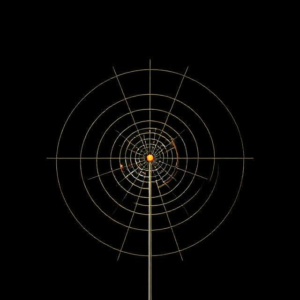An antenna is a device that sends or receives electromagnetic waves (like radio, TV, or Wi-Fi signals). When an antenna transmits or receives waves, it doesn’t send them out in all directions equally. Instead, it sends or receives the waves in specific patterns.
The radiation pattern of an antenna shows how the strength of the signal changes with direction around the antenna. It essentially tells us where the antenna is strongest and weakest at receiving or transmitting waves.

What is a Radiation Pattern?
The radiation pattern is a graphical representation that shows how the signal is distributed in space. It describes how the antenna radiates energy in different directions. In simpler terms, it’s like a map that shows where the antenna’s signal goes.
Key Concepts:
- Directionality:
- Omni-Directional: Some antennas send signals in all directions equally, like a light bulb spreading light everywhere. This is called an omni-directional radiation pattern.
- Directional: Other antennas focus their energy in specific directions, like a flashlight that only shines in one direction. These antennas have a directional radiation pattern.
- Strength of the Signal:
- The radiation pattern helps us understand how strong the signal is in different directions. In some directions, the signal might be very strong, and in others, it might be weak or even nonexistent.
- 3D or 2D Patterns:
- Radiation patterns can be shown in 2D (like a flat map) or 3D (a full sphere around the antenna).
- 2D patterns are often drawn in a circle with the antenna at the center.
- 3D patterns look like a globe, showing how the signal spreads out in all directions.
Types of Radiation Patterns:
- Omni-Directional Pattern:
- Description: The antenna radiates signals equally in all directions in a plane (like a circle).
- Example: A Wi-Fi router antenna, which sends signals in all directions horizontally.
- Pattern Shape: This would look like a donut shape, where the strongest signal is around the horizontal plane of the antenna.
- Directional Pattern:
- Description: The antenna focuses its energy in a specific direction, creating a beam. The signal is stronger in one direction and weaker in others.
- Example: A TV antenna or satellite dish, which sends signals toward a specific location.
- Pattern Shape: This can look like a cone or a lobe, where the signal strength is concentrated in one direction.
- Bidirectional Pattern:
- Description: The antenna has two main lobes of radiation, with weaker signals in other directions.
- Example: A dipole antenna, commonly used in radio transmission.
- Pattern Shape: The pattern looks like a figure-eight, with two main strong lobes and weaker areas in between.
- Dipole Antenna Radiation Pattern:
- Description: The dipole antenna has a bidirectional radiation pattern, where the signal is strongest along the two sides of the antenna and weakest at the ends.
- Pattern Shape: The pattern looks like a donut with the strongest signal around the middle.
Key Terms:
- Main Lobe: The main direction where the antenna radiates the strongest signal.
- Side Lobes: These are weaker areas of radiation away from the main lobe.
- Back Lobe: The area opposite to the main lobe, where the signal strength is usually weak.
- Beamwidth: This refers to how narrow or wide the main lobe is. A narrow beamwidth means the antenna focuses its signal in a small area, while a wide beamwidth means the signal is spread over a larger area.
Why Is the Radiation Pattern Important?
- Coverage Area: Knowing the radiation pattern helps us understand where the antenna will work best. For example, an omni-directional antenna is good for covering a large area, while a directional antenna can send a strong signal over long distances.
- Efficient Use: With the right radiation pattern, you can ensure that the antenna’s energy is used effectively, reaching the intended destination and minimizing interference or wasted power.
- Design Choice: The radiation pattern influences the design of the antenna depending on the specific application. For example, a Wi-Fi router needs an omni-directional antenna, while a satellite system needs a highly directional antenna.
Summary:
- The radiation pattern of an antenna shows where and how strongly the antenna transmits or receives signals in different directions.
- Omni-directional antennas send signals equally in all directions, while directional antennas focus their signal in a particular direction.
- The radiation pattern helps decide how and where an antenna is best used, like providing strong coverage in a building (for Wi-Fi) or focusing on a distant satellite (for satellite dishes).
Tags: 2D radiation pattern, 3D radiation pattern, Antenna, antenna applications, antenna beam, antenna coverage, Antenna Design, antenna efficiency, antenna gain, antenna lobes, antenna signal pattern, Antennas, back lobe, beamwidth, bidirectional pattern, coverage area, dipole antenna pattern, directional antenna, directionality, Electromagnetic Waves, interference reduction, main lobe, omni-directional antenna, radiation pattern, satellite dish pattern., side lobes, signal distribution, signal focus, signal reception, signal strength, signal transmission, Wi-Fi antenna, wireless communication


